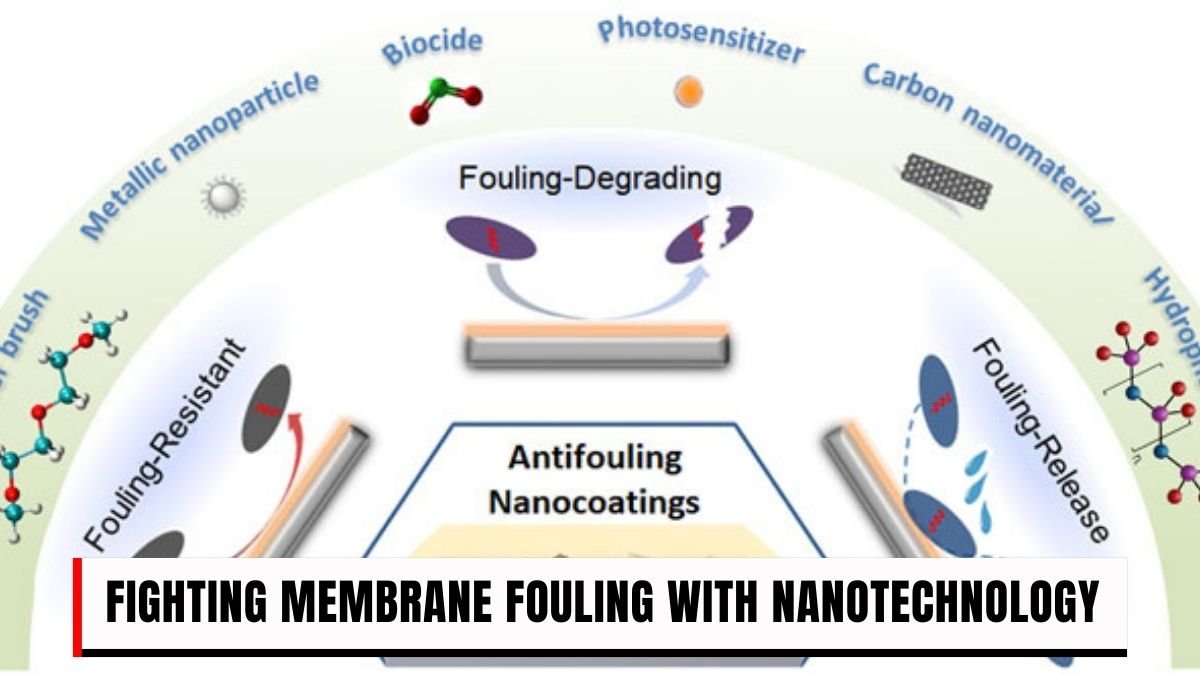Fighting Membrane Fouling with Nanotechnology: Water purification and clean water supply is currently among the largest problems of the world. Whether water is consumed in industries or at household level as drinking water, the call of clean water is growing at an alarming rate everywhere. In purifying water, filtration membranes are utilized but with time they start to accumulate dirt, bacteria, organic matter and scale. This issue is known as fouling of the membranes. This not only interferes with the process of purification, but also consumes more energy and shortens the life of the membrane. Nanotechnology has provided a new pathway to overcome all these challenges to make membranes efficient, durable and self cleaning.
Nanomaterial coated membranes
The surface of the membrane is coated or embedded with special nanomaterials through nanotechnology. This alters the chemistry and structure of the membrane surface such that it becomes hard to have dirt and microorganisms stick on the surface. Graphene and graphene oxide are some of the materials used to make membranes more hydrophilic i.e. water-loving. This forms a hydration layer on the face of the membrane that prevents dirt and other negative elements. Other than this, the geometry of graphene can be used to inactivate bacteria, which decreases the chances of biofilm formation.
Metal and metal oxide nanoparticles such as silver, titanium dioxide and zinc oxide are also being used. Silver nanoparticles release ions that inhibit bacterial growth. Titanium dioxide becomes active when exposed to ultraviolet light and forms reactive oxygen species that destroy organic dirt deposited on the membrane. Similarly, zinc oxide also provides antimicrobial effect and keeps the membrane safe for a long time.
The use of zwitterionic materials is also an important innovation. They contain both positive and negative charges, which creates a stable and neutral hydration layer on the membrane surface. This layer prevents proteins, oils and other complex impurities from sticking. For this reason, many companies like ZwitterCo are pursuing this technology commercially.
Self-cleaning and stimuli-responsive membranes
The best way to fight fouling is to enable the membrane to clean itself from time to time. Nanotechnology is also providing new opportunities in this direction. New materials like phosphorene along with titanium dioxide are used in photo-catalytic membranes. When exposed to UV light, they break down the accumulated organic impurities and make the membrane active again.
Similarly, electrically conductive membranes are also being developed, which use carbon nanotubes and graphene. When mild electric pulses are applied to these membranes, the dirt automatically gets removed from the surface and the need for cleaning with chemicals is greatly reduced.
Thermo-responsive membranes are also a big part of research. They are designed in such a way that their surface properties change when the temperature changes. When the temperature changes, they release the trapped dirt and thus clean themselves.
Biomimetic membranes: innovation inspired by nature
Nature has always been a source of inspiration for scientists. Biomimetic i.e. techniques inspired by natural systems are now being used in membrane design as well. Aquaporin-based membranes are the best example of this. Aquaporin proteins are present in the cells of our body and allow billions of water molecules to pass through per second while keeping salt and other unwanted substances out. By incorporating these proteins into polymer membranes, membranes with high capacity and low fouling are being prepared.
Membranes inspired by the lotus leaf are also a great example. The lotus leaf never gets dirty because it has special micro and nano structures on its surface. When a drop of water falls on it, it rolls easily and takes away the dirt along with it. Membranes made on this principle are superhydrophobic or superoleophobic, on which water and oil droplets cannot stick. This keeps the membranes clean automatically.
Commercialization and future path
Although these technologies are proving to be quite successful at the laboratory level, adopting them on a large scale is still a challenge. Issues like cost of production, long-term stability and their coordination with the existing structure are still pending. These problems are being continuously researched so that these innovations can be fully implemented at the industrial and domestic level.
Many companies are playing a leading role in this direction. ZwitterCo is commercializing membranes made from zwitterionic chemistry. NX Filtration is leading the way with its Hollow Fiber Nanofiltration technology, while DuPont Water Solutions has developed B-Free Biofouling Control Technology, which provides a unique system to prevent microbial growth.
As new nanomaterials are developed in the future, these technologies will become costlier and can be used for a longer period of time. It is certain that nanotechnology will bring a major revolution in the water purification process and ensure safe water supply for humanity.
Conclusion
Nanotechnology is emerging as the most powerful solution against membrane fouling today. Technologies such as graphene-based coatings, photo-catalytic self-cleaning systems and biomimetic designs are not only helping in making water more pure but also reducing energy consumption and increasing the life of filtration systems. In the coming times, these technologies will become common at both domestic and industrial levels. This will increase the availability of clean water and will prove to be a permanent solution for human society.
